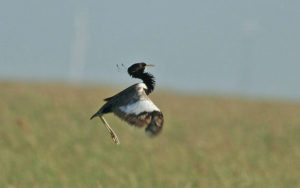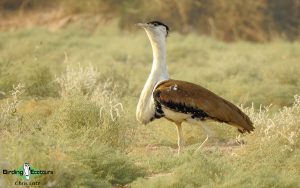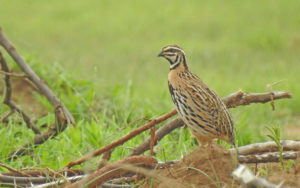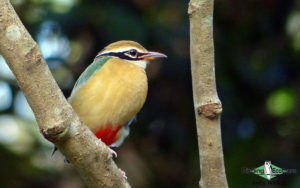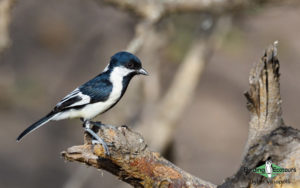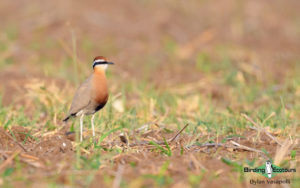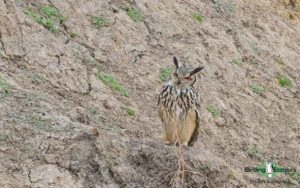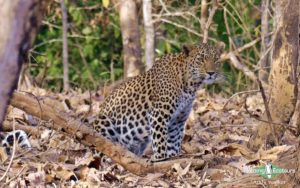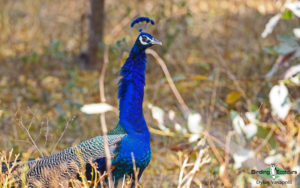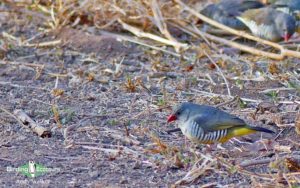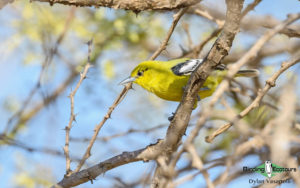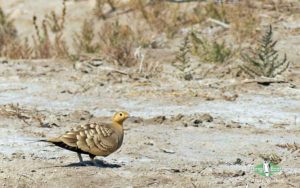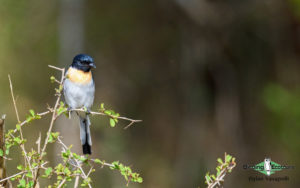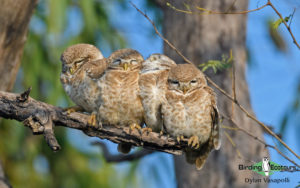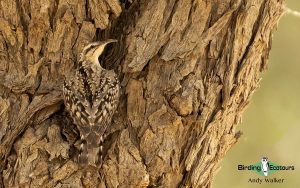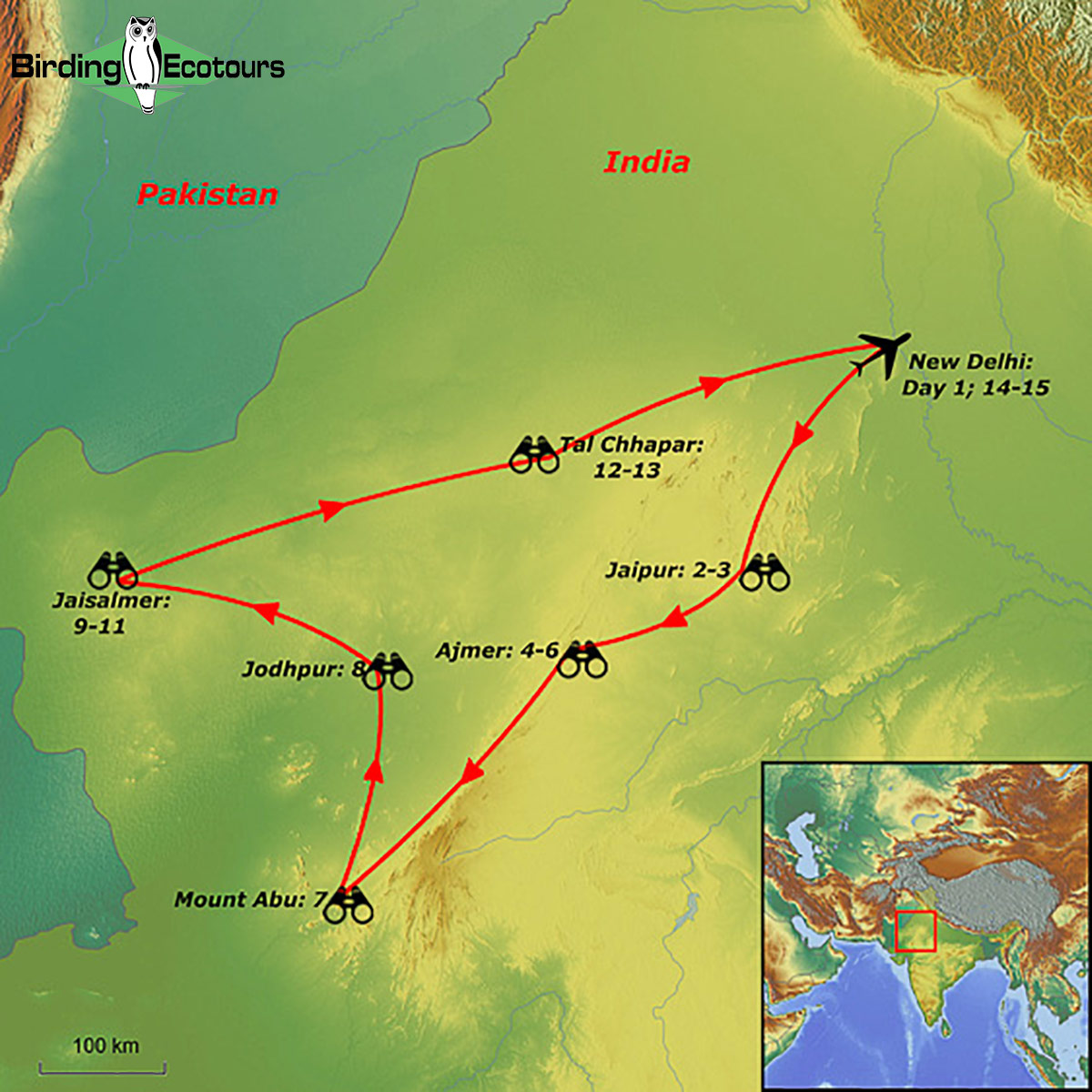Birding Tour India: Rajasthan – Monsoon Specialties
Birding Tour India: Rajasthan – Monsoon Specialties
August 2026/2027
This small-group birdwatching tour through Rajasthan, India, is timed during the monsoon season to target a suite of birds more difficult, or not possible at all, at other times of the year. This tour starts and ends in New Delhi and takes a circuit around the state, looking for the following major targets: Great Indian Bustard, Lesser Florican, Indian Pitta, Bristled Grassbird, Indian Courser, Rock Bush Quail, Rain Quail, Painted Francolin, Green Avadavat, Sind Sparrow, and Indian Spotted Creeper.
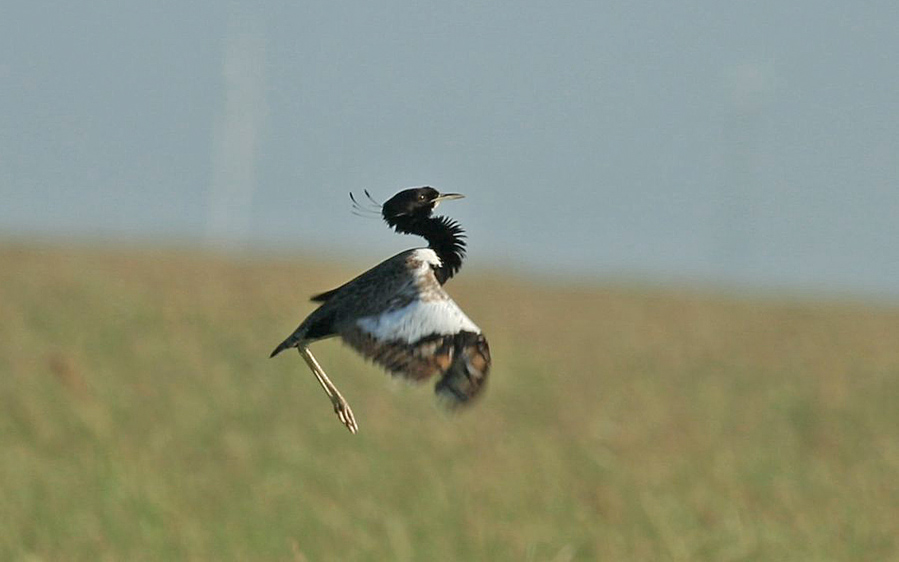
Along the way while looking for the above main target birds we will also find plenty of other interesting birds, such as Black-necked Stork, Sarus Crane, Spotted Sandgrouse, Black-bellied Sandgrouse, Cream-colored Courser, Indian Spotted Eagle, Indian Eagle-Owl, Jacobin Cuckoo, Striated Babbler, Bengal Bush Lark, Black-crowned Sparrow-Lark, and Desert Lark, and other wildlife including Indian Leopard and Blackbuck.
We also offer a wide range of other tours around the Indian subcontinent at different times of the year, such as our other Indian tours here, Sri Lankan tours here, Nepal tours here, and Bhutan tours here. There are so many incredible birds on offer throughout this part of Asia.
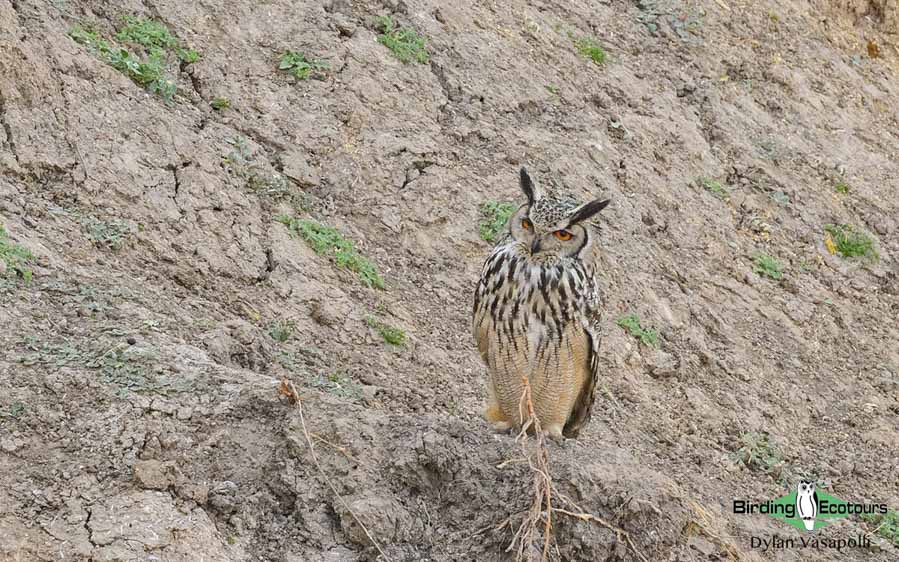
Itinerary (15 days/14 nights)
Day 1. Arrival in New Delhi
After your late-morning arrival in New Delhi we will transfer to our nearby hotel for check-in (check-in is usually at noon). After lunch we will spend the first afternoon of the tour birding at a fantastic wetland site near New Delhi, where we hope to find the first of many monsoon-specialty birds, Bristled Grassbird, as well as the local Bengal Bush Lark. We will likely see numerous other common birds for the first time too, maybe the pretty Red-naped Ibis and the abundant Black Kite.
If you would like to arrive earlier and explore some of the interesting sights of New Delhi we can organize extra accommodation and cultural activities very easily, please just let us know in advance.
Overnight: New Delhi
Day 2. New Delhi to Jaipur via Sultanpur National Park
After breakfast in New Delhi we will head to the outskirts of the city to Sultanpur National Park. We could see some interesting species here, such as the restricted-range Sind Sparrow and Striated Babbler. Although a number of the birds that occur here during our January-February Birding Tour India: The North – Tigers, Amazing Birds, and the Himalayas will have left the site to go to their breeding grounds we are still likely to get an interesting supporting cast, made up of some of the following: Painted Stork, Black-necked Stork, Sarus Crane, Knob-billed Duck, Indian Spot-billed Duck, Indian Spotted Eagle, Grey-headed Swamphen, Clamorous Reed Warbler, Indian Robin, and Spotted Owlet.
The afternoon will be spent driving to Jaipur, where we will stay for the next two nights as we focus on the birds and wildlife of that area. We may be lucky and find Indian Courser as we drive south.
Overnight: Jaipur
Day 3. Jhalana Safari Park, Jaipur
We will have morning and evening safaris (as game drives are called in India) in Jhalana Safari Park, which amazingly is right on the edge of the city of Jaipur. We will be on the lookout for Indian Leopard, which occurs in the park, but we will always also be searching for several great birds, namely Indian Pitta, Jacobin Cuckoo, and Jungle Nightjar. The pitta overwinters in southern India and Sri Lanka, and remarkably the cuckoo overwinters as far away as southeastern Africa! Both return to this part of India to breed during the monsoon.
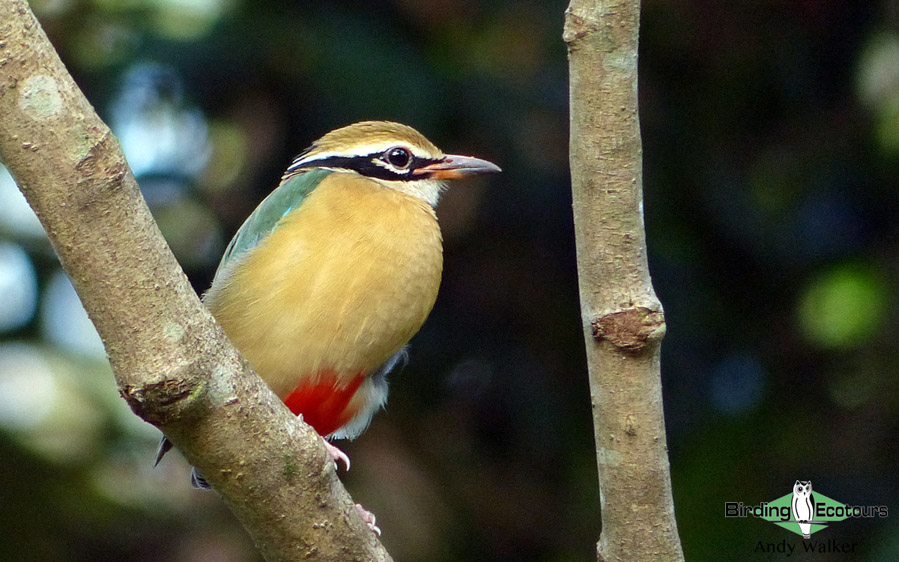
Jaipur has many fascinating monuments, and during the downtime in the middle of the day there will be opportunity to visit some of these if you would like, such as Hawa Mahal, Jal Mahal, Nahargarh Fort, Jaigarh Fort, Jantar Mantar, and more. We can provide the costs for additional guided tours to these and other interesting sights; please let us know while booking if you would like to add something cultural to your birding tour here. Our time here will also get us some great looks at the national bird of India – the simply spectacular Indian Peafowl.
Overnight: Jaipur
Day 4. Jaipur to Ajmer
We will have a final early-morning safari back in Jhalana Safari Park, looking for our targets, after which we will commence our journey to Ajmer. We will likely stop for a few birds along the way, potentially Indian Courser and others.
Overnight: Ajmer
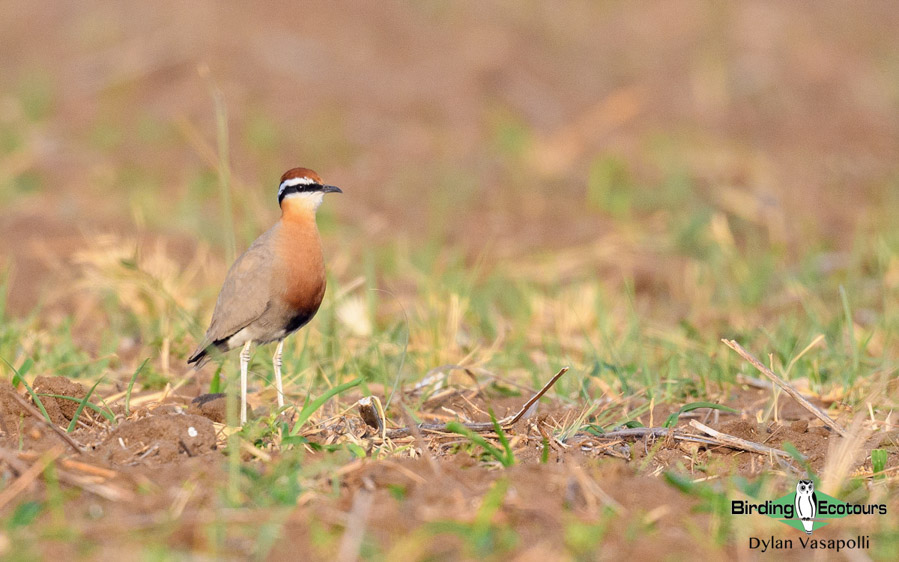
Days 5 – 6. Sonkhaliya
We will have two full days birding in the Sonkhaliya area, where we will search for yet more of our monsoon target birds, with some real beauties and highly sought species on offer. After each day’s birding session we will return to our hotel in Ajmer. One of our big targets will be the Lesser Florican. This bird is practically invisible outside the monsoon season, but we have a reasonable chance of connecting with them, particularly if they are doing their impressive ‘leaping’ courtship display – a sight to behold, and try to photograph if you are quick enough (as shown in the itinerary cover photo).
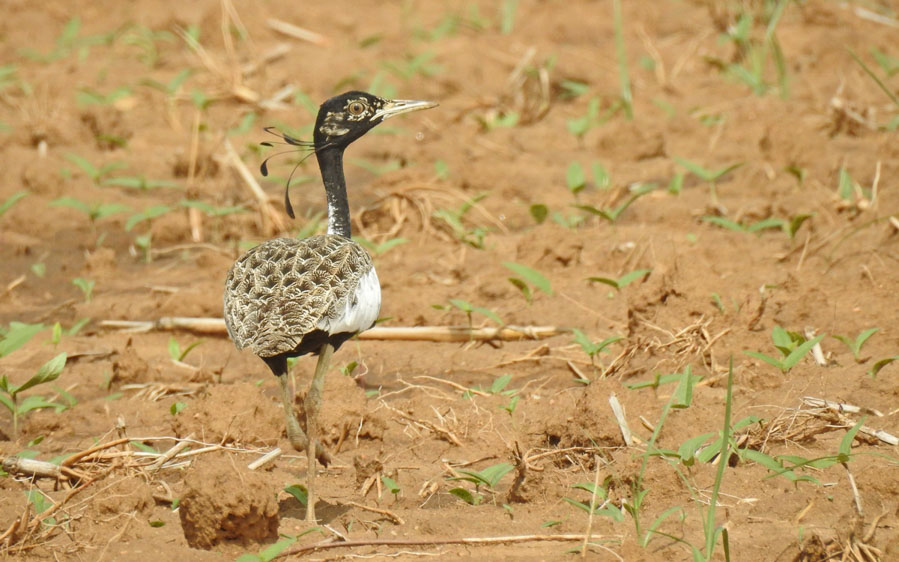
We will also carefully search for a couple of other small ground birds, namely Rock Bush Quail and Rain Quail. During the monsoon the quails can be more vocal than at other times of the year, leading to a higher chance to see them. Additionally the range-restricted Painted Francolin might add a flash of color.
Overnight: Ajmer
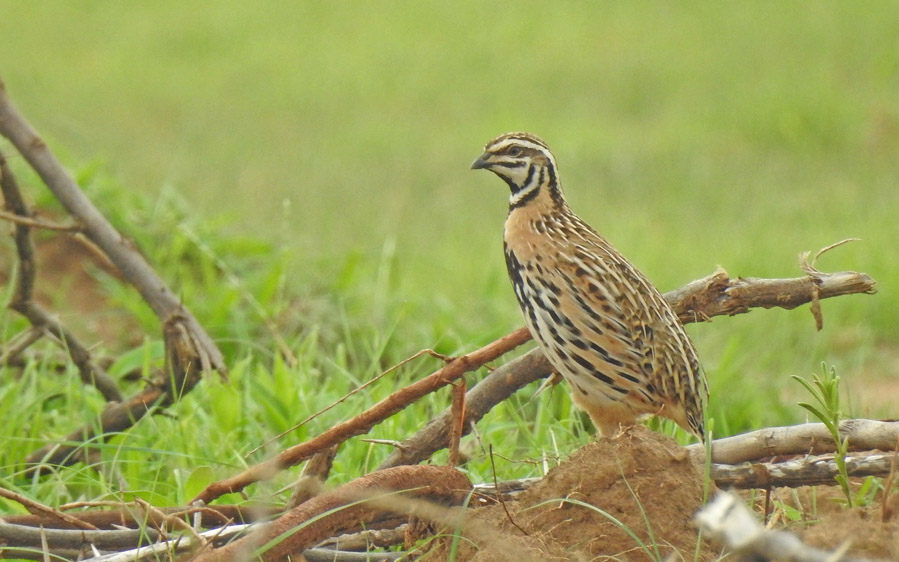
Day 7. Ajmer to Mount Abu (via Pushkar)
This will essentially be a travel day as we move between Ajmer and the hill station at Mount Abu. We will leave after an early breakfast and will stop along the way at Pushkar, where we hope to find White-naped Tit, Marshall’s Iora, and White-bellied Minivet.
In the evening we will have a birding session for the range-restricted Green Avadavat. This small munia has disappeared from much of its former range due to the illegal pet trade.
Overnight: Mount Abu
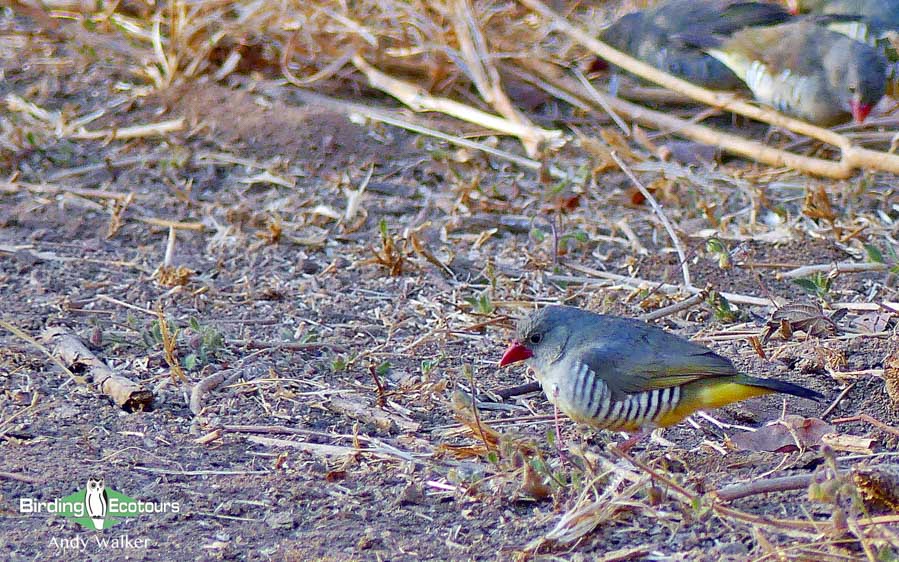
Day 8. Mount Abu to Jodhpur
We have a long journey to get from Mount Abu to Desert National Park, so we have chosen to break the drive with an overnight stop in the city of Jodhpur. Prior to our journey today we will have a birding session, where we will look for Green Avadavat and other species that may be present in the scattered hillside vegetation.
Overnight: Jodhpur
Day 9. Jodhpur to Desert National Park
We will spend the day driving between Jodhpur and Jaisalmer, our base for exploring the important Desert National Park.
Overnight: Jaisalmer
Days 10 – 11. Desert National Park
We will have two full days exploring the incredible Desert National Park. Here we will search for the Critically Endangered (IUCN) Great Indian Bustard, a species that is unfortunately hurtling toward extinction. This is about the best place in the world to find this species, and so this is our prime target during our time here. In addition to the bustard we will also search for Spotted Sandgrouse, Black-bellied Sandgrouse, Cream-colored Courser, Black-crowned Sparrow-Lark, and Desert Lark.
Overnight: Jaisalmer
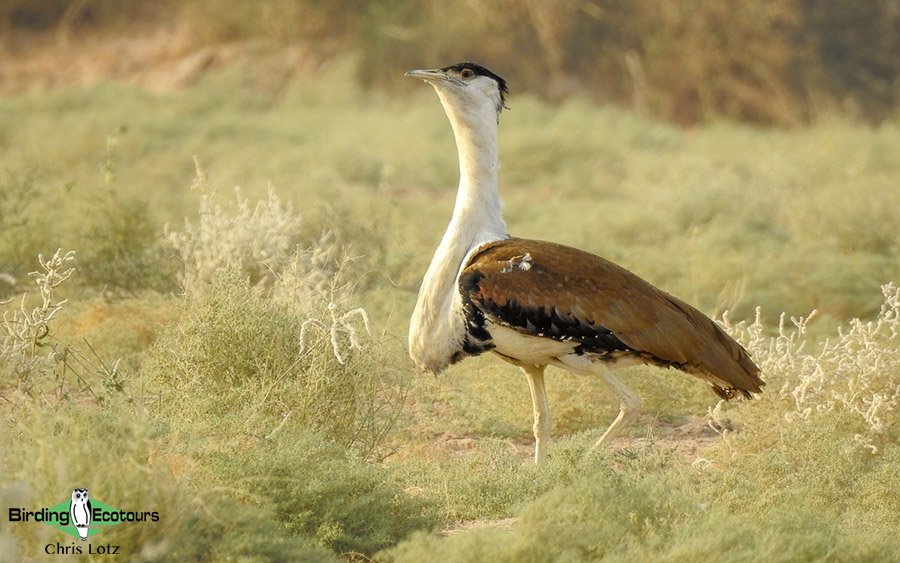
Day 12. Desert National Park to Tal Chhapar (via Bikaner)
This will essentially be a travel day as we leave Desert National Park and Jaisalmer behind and travel to our final base of birding during the tour at Tal Chhapar Sanctuary.
Overnight: Tal Chhapar
Day 13. Tal Chhapar
The grasslands at Tal Chhapar Sanctuary were once hunted by the Maharaja of Bikaner. The small protected area we will be birding is home to Blackbuck and Chinkara and also hosts a number of great birds. At the top of the list for most who come here is the population of Indian Spotted Creeper. However, there are also plenty of other birds to look for, such as Indian Eagle-Owl, White-eyed Buzzard, Laggar Falcon, and Yellow-eyed Green Pigeon.
Overnight: Tal Chhapar
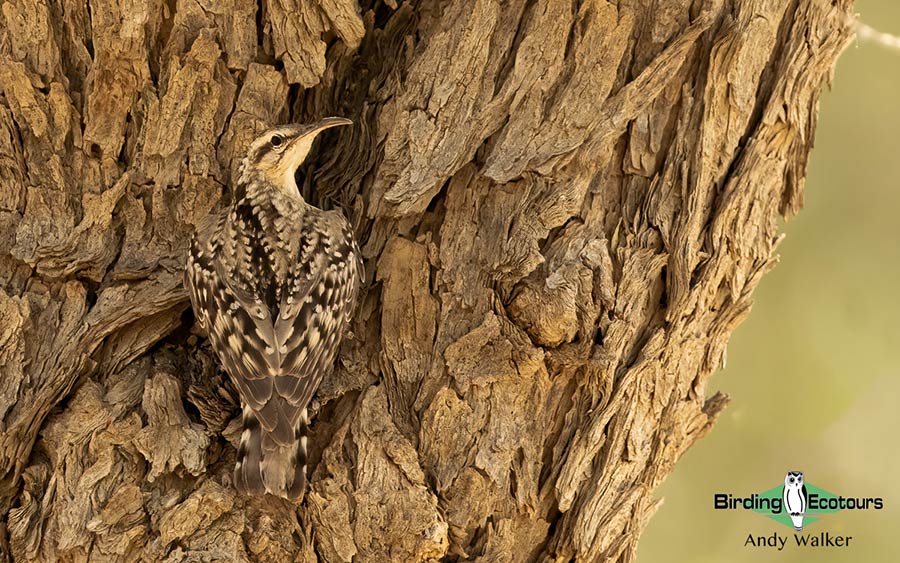
Day 14. Tal Chhapar to New Delhi
After a final morning birding at Tal Chhapar Sanctuary we will commence our journey back to New Delhi, where we will arrive early in the evening. We will have our final group evening meal together, during which we will work out the difficult task of selecting the ‘bird of the trip’ – there is sure to be some fierce competition!
Overnight: New Delhi
Day 15. Departure from New Delhi
This will be a non-birding day with your departure from New Delhi.
Overnight: Not included
Please note that the itinerary cannot be guaranteed as it is only a rough guide and can be changed (usually slightly) due to factors such as availability of accommodation, updated information on the state of accommodation, roads, or birding sites, the discretion of the guides and other factors. In addition, we sometimes have to use a different international guide from the one advertised due to tour scheduling.
Download Itinerary
